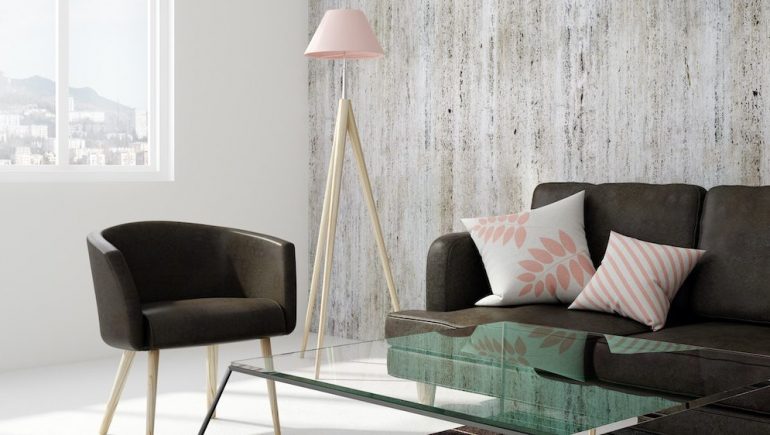Faux finish painting became popular in the late 1990s as a way to break the monotony of flat wall colors. Sponge or rag painting, the “dry brush” technique, Venetian plaster, glazes…options are varied! But are faux paint finishes in or out? Most interior designers would agree, it is based on the application technique used and the skill with which is applied.
Places you can use a faux paint finish include walls, cabinet doors, furniture, and even fireplace surrounds. Limit their use to bring attention to them, or put it on every wall in the room – the choice is yours!
Using faux paint finishes on walls can infuse some personality, versus painting all of them a solid color. Faux paint finishing can make a beginning painter look like an expert. The finish goes on after a first coat, and it will likely disguise most mistakes. These paint treatments do not require precision the way painting stripes or chevrons would, for instance.
Application
Applying a faux finish doesn’t need to be complex or involve specialty tools. An old rag, a sponge, or even a plastic grocery bag crumpled up and dipped in the paint will each give a different effect. Or use just the tips of the bristles dipped in paint for a stippled effect. Brushes can also make striae, a soft streak in the color to resemble fabric.
Wet and dry-brush techniques give different aesthetics as well. For an ombre effect, brushes dipped in water will blend the colors so they fade into each other. Or lightly sweeping the bristles of a dry paintbrush in vertical and horizontal directions will create a cross-hatch texture. Regardless, be prepared to work quickly in small sections before the paint dries.
Glazes
Venetian plaster and other glazes layer on top to give a lustrous texture. Glazes come in water-based, oil-based, or make-your-own. Glazing requires both wet and dry brushes, and more time with wiping on and then off, blending, and then moving to the next section. Venetian plaster is first rolled, then troweled onto the wall on top of a base coat of paint. The final coat sweeps across with the trowel in a criss-cross motion, then finishes with a light sanding. The heat and friction from the trowel create the sheen.
Contrasting colors
For a more dramatic effect, choose two different paint colors or two colors three or more apart on the same spectrum. To create an understated finish, select paint one degree lighter or darker on the same spectrum. Varying sheens will yield a contrasting effect (one color in a paintable flat, another in a semi-gloss, for instance).
Faux paint finishes on cabinets
For old, damaged, or outdated cabinetry, consider painting them, especially as a low-cost transformation when staging. Antiquing layers a premixed solution over the paint. The crackle technique weathers the paint; use one color or two to create dimension. Sponging applies a glaze to the cabinet over top of the paint. And rag rolling uses one part paint to three parts glaze for an understated elegant look.
Faux finishes in home staging
When staging, tone down the contrast, and minimize the use of faux finishes. The object is to appeal to the widest group of potential buyers, and too-specific décor can deter someone who otherwise would buy your home. Faux finish a focal wall in a tone-on-tone neutral color scheme in one or two rooms for a subtle effect.
Related – Yes, You Can Paint Your Kitchen Cabinets


